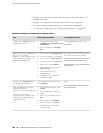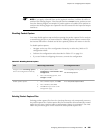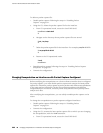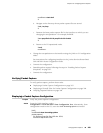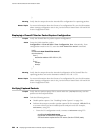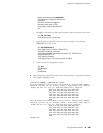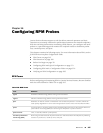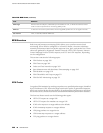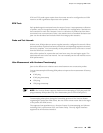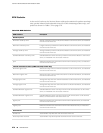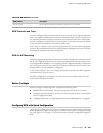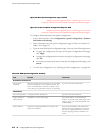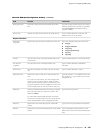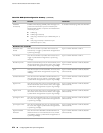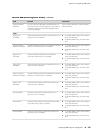
Table 138: RPM Terms (continued)
DefinitionTerm
Remote network endpoint, identified by an IP address or URL, to which the Services Router
sends a real-time performance monitoring (RPM) probe.
RPM target
A collection of real-time performance monitoring (RPM) probes sent out at regular intervals.RPM test
Time, in seconds, between RPM tests.test interval
RPM Overview
Real-time performance monitoring (RPM) allows you to perform service-level
monitoring. When RPM is configured on a Services Router, the router calculates
network performance based on packet response time, jitter, and packet loss. These
values are gathered by Hypertext Transfer Protocol (HTTP) GET requests, Internet
Control Message Protocol (ICMP) requests, and TCP and UDP requests, depending
on the configuration.
This section contains the following topics:
■ RPM Probes on page 268
■ RPM Tests on page 269
■ Probe and Test Intervals on page 269
■ Jitter Measurement with Hardware Timestamping on page 269
■ RPM Statistics on page 270
■ RPM Thresholds and Traps on page 271
■ RPM for BGP Monitoring on page 271
RPM Probes
You gather RPM statistics by sending out probes to a specified probe target, identified
by an IP address or URL. When the target receives the probe, it generates responses,
which are received by the Services Router. By analyzing the transit times to and from
the remote server, the Services Router can determine network performance statistics.
The Services Router sends out the following probe types:
■ HTTP GET request at a target URL
■ HTTP GET request for metadata at a target URL
■ ICMP echo request to a target address (the default)
■ ICMP timestamp request to a target address
■ UDP ping packets to a target device
■ UDP timestamp requests to a target address
■ TCP ping packets to a target device
268 ■ RPM Overview
J-series™ Services Router Administration Guide



